Hello looking for help with ranking.
I'm working with Teradata using SQL and I'm trying to rank a list by a specific group and then by age.
For example: I want to rank by group then only rank those under the selected group that are under 21 years old.
However, when I use the query below it seems to not take into account the members in a group and assigns only if they meet the criteria in the case statement.
select
policy,
age,
case when age <'21' then '1'else '0' end as Under21,
case when age <'21' then dense_rank () over (order by group, age desc) else '0' end as Rank_Under_21
from Table

